Abstract
As of December 2022, cultivated rice in Japan, including first-grade glutinous brown rice (60kg), is priced up to ¥11,800. Over the past decade, rice prices have generally remained stable, with occasional fluctuations due to factors like weather, government policies, and market demand. Rice remains a staple, but production has declined due to aging farmers and shifting preferences. In contrast, prices for grains like wheat and beans have seen more variability, with wheat prices influenced by global markets and beans affected by changing domestic agricultural practices and consumer preferences.
General agricultural products (rice)
From January 2020 to December 2022, the price of non-glutinous brown rice (60 kg, grade 1) reached its peak at ¥14,700 in January 2020. Since then, prices have seen a decline, with the current yield at 78.5% of its peak. This trend reflects the impact of various factors, including declining rice production, aging farmers, and reduced consumption. While rice remains a crucial agricultural product in Japan, the market has been affected by global conditions and changing domestic preferences. Despite fluctuations, rice continues to hold cultural and economic significance, though its price is sensitive to supply-demand dynamics.
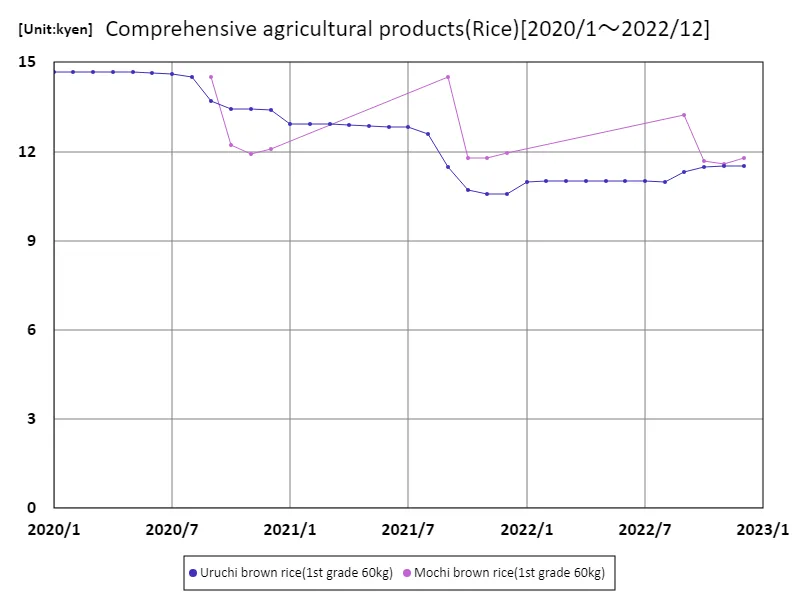

The maximum is 14.7kyen[2020年1月] of Uruchi brown rice(1st grade 60kg), and the current value is about 78.5%
General agricultural products (miscellaneous grains)
From September 2020 to December 2022, the price of miscellaneous grains, including buckwheat, reached its peak at ¥11,400 for 45kg of whole soba in November 2021. Since then, prices have decreased, with the current price of unpolished buckwheat at 76.1% of its peak. This decline reflects several factors, including fluctuations in domestic production, weather conditions, and changing consumer demand. Despite this, soba remains a popular staple in Japanese cuisine, and while prices have softened, the market for buckwheat is still influenced by both supply constraints and the evolving agricultural landscape.
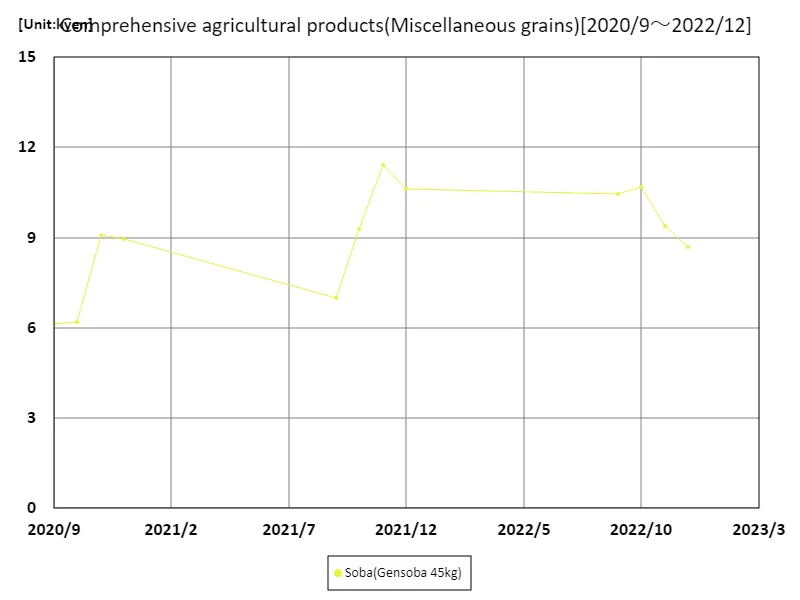

The maximum is 11.4kyen[2021年11月] of Soba(Gensoba 45kg), and the current value is about 76.1%
General agricultural products (wheat)
In June 2020, the price of wheat and barley in Japan saw a peak of ¥7,650 for 50kg of two-row barley (grade 2), with the average price being ¥4,660. The total price reached ¥12,900 for the entire quantity, reflecting the importance of barley in domestic agriculture, particularly for beer production. Price fluctuations have been influenced by global supply chains, weather conditions, and changing consumer demand for beer. Despite this, barley prices remain relatively stable compared to other crops, with domestic production facing challenges from global market dynamics and competition with imported grains.
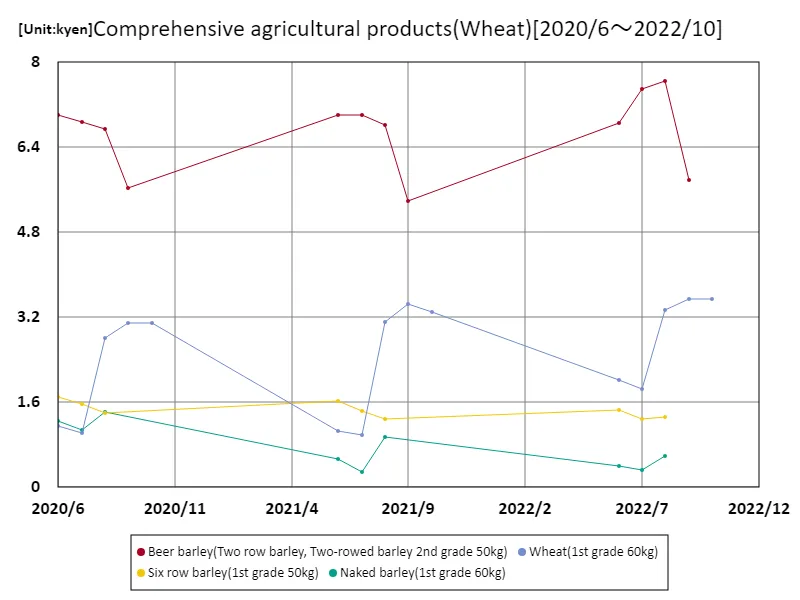

The maximum is 7.65kyen[2022年8月] of Beer barley(Two row barley, Two-rowed barley 2nd grade 50kg), and the current value is about 75.6%
General agricultural products (beans)
From January 2020 to December 2022, the price of beans in Japan peaked at ¥46,800 for 60kg of second-grade king nuts with shells in November 2021. Since then, prices have softened, with the current price of shelled peanuts at 87.2% of its peak level. The price trends reflect fluctuating production levels, supply chain challenges, and weather-related factors affecting harvests. Peanuts remain an important agricultural product, used widely in food products, yet their price volatility is influenced by both domestic agricultural conditions and global market trends. Despite the decline, beans continue to be a significant crop in Japan.
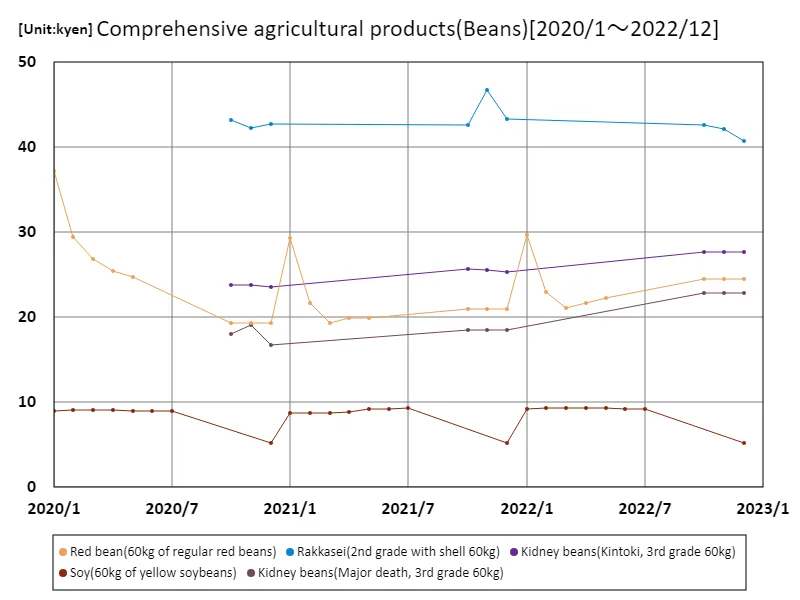

The maximum is 46.8kyen[2021年11月] of Rakkasei(2nd grade with shell 60kg), and the current value is about 87.2%
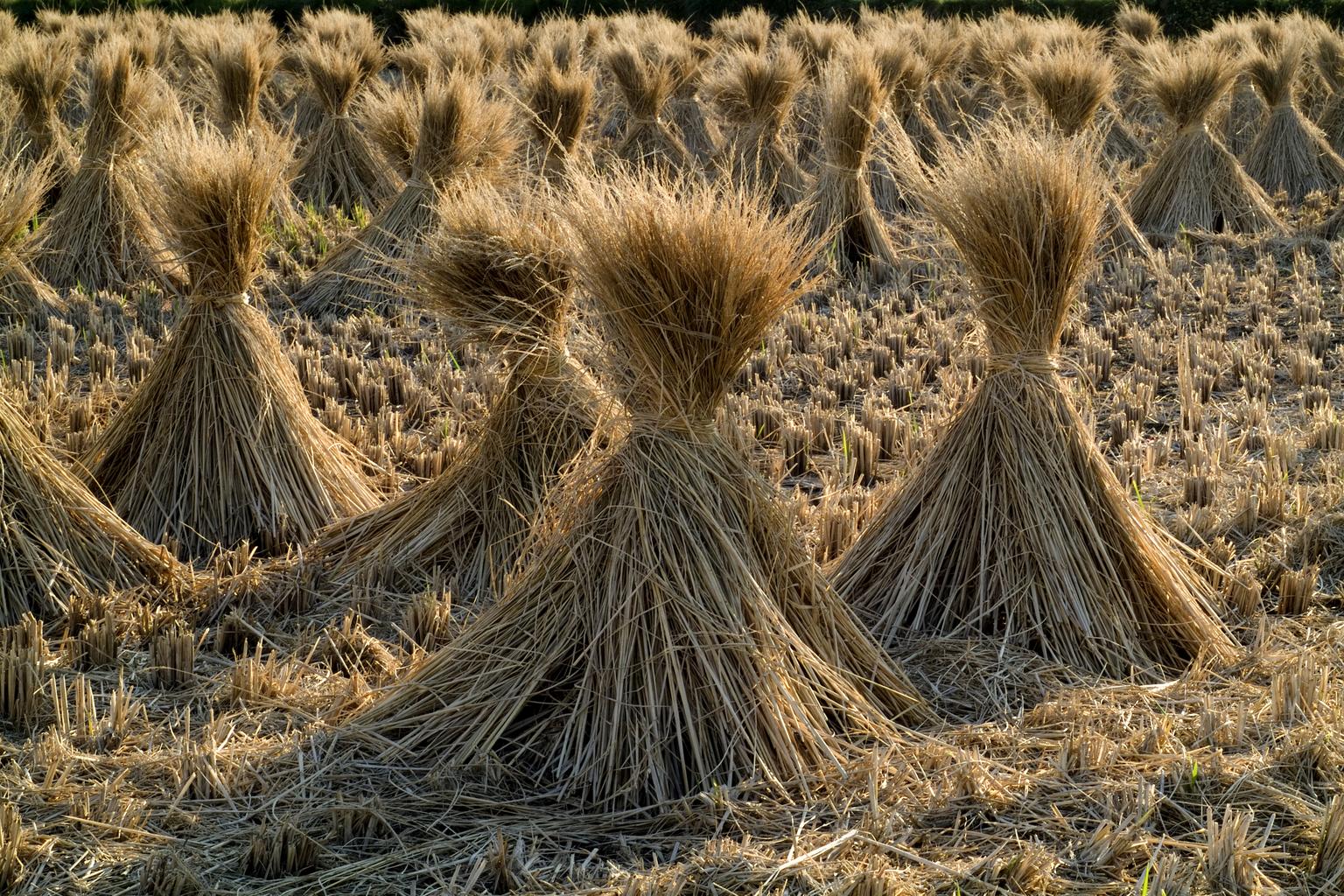


Comments